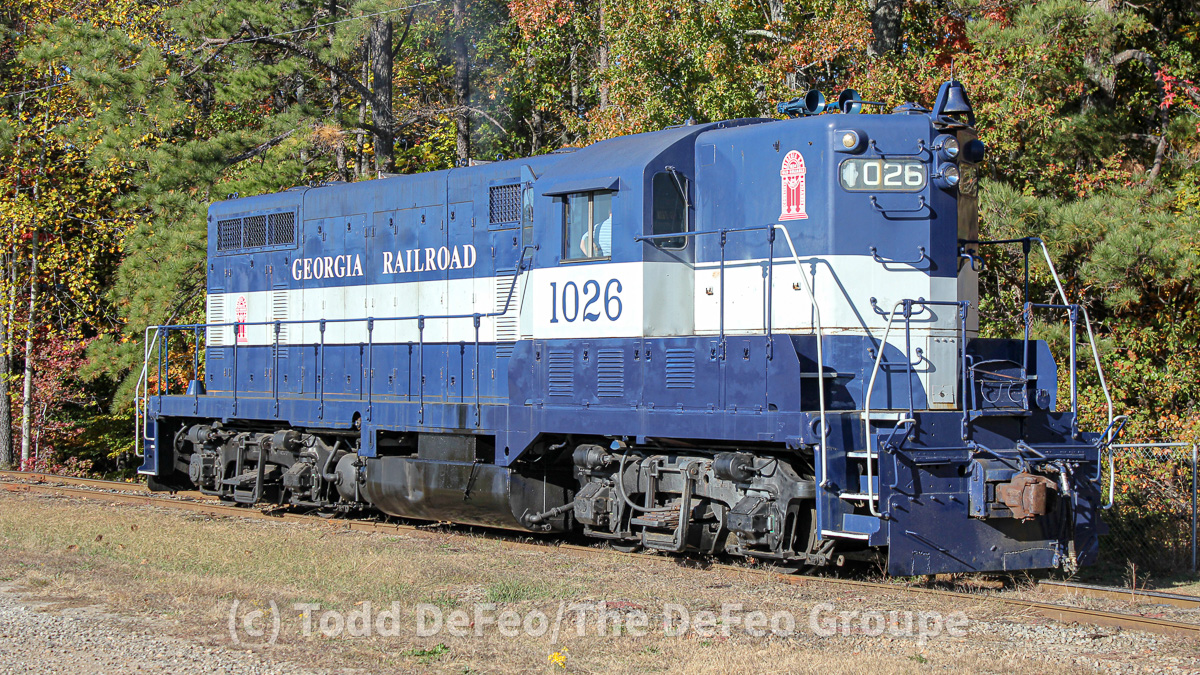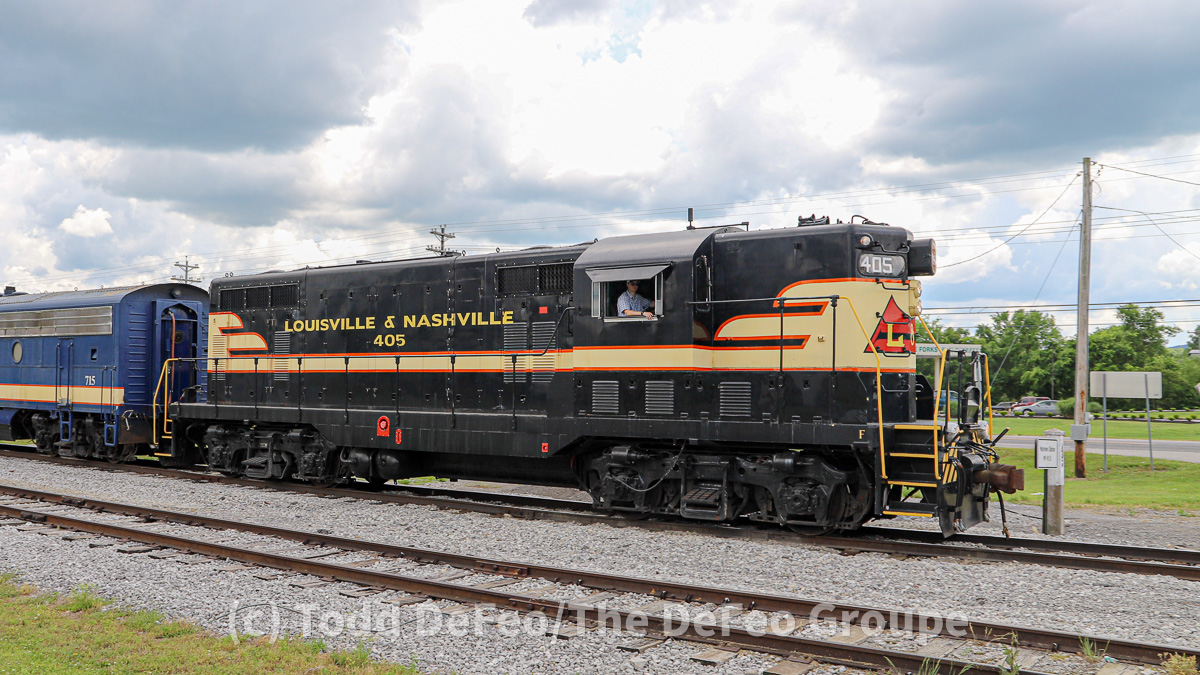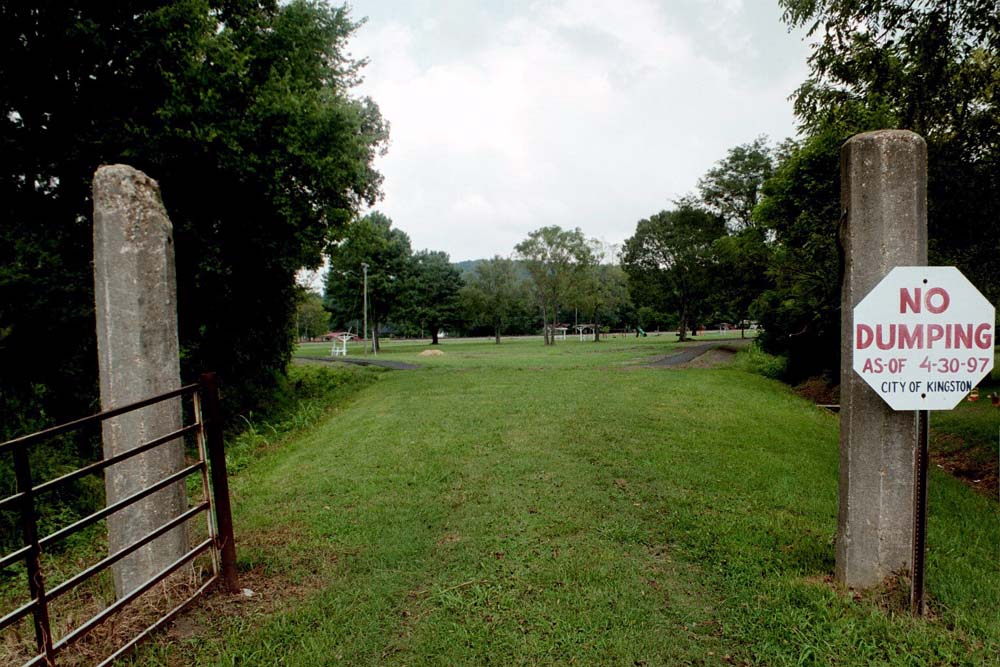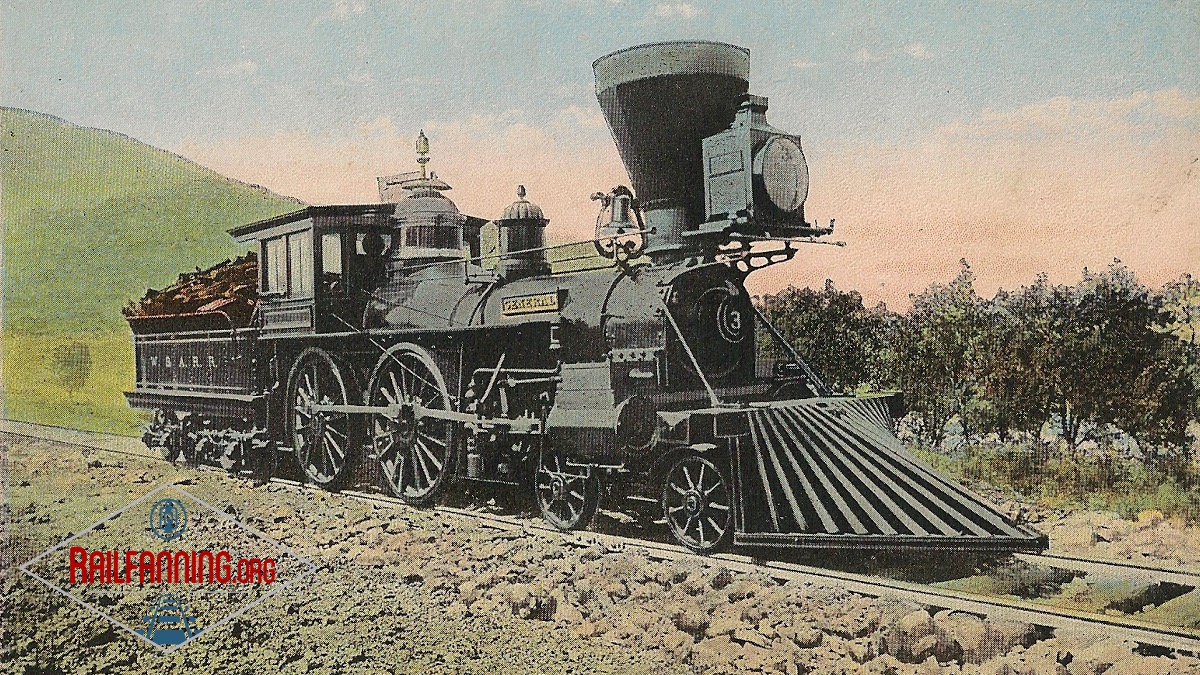The Atlanta, Stone Mountain and Lithonia Railwaywas a rock quarry railroad that began operations in 1909, serving as a "common carrier" railroad. It primarily connected granite and gneiss quarries at Lithonia and Stone Mountain in DeKalb County, Georgia, to the Georgia Railroad. The ASM&L operated 4 miles of track from Lithonia to a quarry near Rock Chapel, Georgia. The railway had two lines on the north side of the Georgia Railroad in Lithonia, one leading to the "Big Ledge" quarry and the other to the Pine Mountain quarries, using tracks from the former Pine Mountain Granite Company. On the south side, it operated a 4-mile line to the quarries at Arabia Mountain, previously part of the Lithonia & Arabia Mountain Railroad. At Stone Mountain, the ASM&L connected the Georgia Railroad to the granite quarries on the eastern slope, utilizing tracks laid by a predecessor company shortly after the Civil War.
The Atlanta Consolidated Street Railway, incorporated in May 1891, was an effort led by Joel Hurt to consolidate the streetcar systems operating in Atlanta during the late 19th century.
On September 21, 1891, several streetcar systems, including the Atlanta Street Railway, owned by Edward C. Peters, and the electrified Atlanta and Edgewood Street Railroad, owned by Hurt, were merged into the Atlanta Consolidated Street Railway.
The Gate City Street, Fulton County Street Railroad and West End and Atlanta Street railroads were also merged into the Atlanta Consolidated Street Railway. The Metropolitan Street Railroad was absorbed into the Consolidated on November 22, 1892.
Despite Hurt's efforts to modernize and consolidate Atlanta's streetcar system, competitors emerged by the mid-1890s. As Hurt continued to electrify the lines, he increasingly turned to Henry M. Atkinson for power, and tensions between the two began to surface.
The ensuing fight escalated into what became known as the "Second Battle of Atlanta." The conflict resulted in the 1902 creation of the Georgia Railway and Electric Company, a precursor to Georgia Power, which unified existing streetcar companies under one entity.
The Atlanta Northern Railway was interurban line that connected Atlanta and Marietta, Georgia, starting in July 1905. The line ceased operations in early 1947, giving way to competition from motor vehicles. The interurban line more or less paralleled the Western & Atlantic Railroad, a state-owned line that connected Atlanta and Chattanooga, Tennessee.
The Atlanta Street Railway was the first streetcar system in Atlanta, initially chartered by the state of Georgia on February 23, 1866, by George Hillyer, John Westmoreland, and John Thrasher. The city placed onerous demands on the company, including paving swaths of the then-unpaved town, and the charter remained inactive for years. On January 1, 1869, the city reduced most of these demands. Richard Peters and George Adair bought out the charter in April 1871 and later opened the first section of the railway in September 1871, connecting Five Points to the West End and passing by their homes. By 1889, the line owned 15 miles of track, fifty streetcars, and 200 horses and mules, with Edward Peters taking control after his father, Richard Peters, passed away. In 1891, the company merged with the Atlanta Consolidated Street Railway.
The Bostwick Railroad began operations in about March 1907 on its roughly six-mile-long line between Bostwick, where it reached by about February 1907, and Apalachee, Georgia. Passenger operations on the line began in April 1907. In Apalachee, it connected with the Macon-to-Athens branch of the Central of Georgia Railway. The railroad was named for its president, John Bostwick. By August 1911, a receiver’s sale was announced for the railroad, including a 15-ton locomotive, a gondola, a baggage car and a passenger coach with two compartments that each sat 24 people. The Greene County Railroad, named for its president, Forrest Greene, purchased the assets of the Bostwick Railroad.
The Cartersville & Van Wert Railroad was chartered in 1866 in 1887 and built a rail line between Cartersville and the Selma, Rome & Dalton Railroad at Prior, Georgia, near the Georgia/Alabama state line. By 1870 the railroad had 14 miles of five-foot gauge track connecting Cartersville to Taylorsville, Georgia. However, further growth was seemingly stymied by deceitful financial dealings by then Georgia Governor Rufus Bullock, Hanniball Kimball and others. In October 1870, the Cherokee Iron Company purchased the railroad and reorganized it as the Cherokee Railroad.
The Cherokee Railroad, organized in 1870 to take over operations from the failing Cartersville & Van Wert Railroad, initially operated from Cartersville, Georgia, to Taylorsville, Georgia. The new owners extended the railroad to Rockmart, Georgia. The new owners also converted the track from a five-foot gauge to a three-foot gauge. Despite the changes, the railroad's financial problems continued. In 1879, the owners sold the railroad to the Cherokee Iron Company, who leased the Cherokee Railroad's lines to the East & West Railroad of Alabama. In 1886, East & West Railroad purchased and merged the line into its operations.
The Covington & Macon Railroad was founded in 1885 and started operations in 1887, connecting Macon and Hillsboro in Jasper County. It ultimately stretched 102 miles, reaching Athens in December 1888. However, it went bankrupt and was sold at a public auction in 1891. It was then reorganized as the Macon & Northern Railroad.
The state of Georgia chartered the Gainesville, Jefferson & Southern Railroad on Aug. 23, 1872, to build a narrow-gauge railroad from Gainesville, Georgia, to a point on the Georgia Railroad via Jefferson, Georgia. The railroad ultimately built a line, which was completed on March 11, 1884, between Gainesville and Social Circle, Georgia, with a branch to Jefferson. By March 1897, the railroad was in receivership. A judge in July 1903 ordered the railroad sold, but the sale was ultimately postponed. However, by May 1904, a judge approved the sale of the line, and by July 1904, most of the line was sold at foreclosure to the new Gainesville Midland Railway.
The state of Georgia established the Gate City Street Railroad Company on September 26, 1879. Movers and shakers such as Laurent DeGive, Levi B. Nelson, Captain Augustus M. Reinhardt and John Stephens founded the company. In 1884, the company constructed a line that began at the Kimball House and went through Pryor, Wheat, and Jackson Streets to Ponce de Leon Springs. The original builders operated the line until selling it in January 1887. In October 1887, the line changed directions to run along Jackon Street to Ponce de Leon Avenue and then to the springs. It also built a branch to Piedmont Park.
The Georgia, Carolina & Northern Railway was founded in 1886 to build a line between Atlanta, Georgia, and Monroe, North Carolina. Construction on the line started in 1887 in North Carolina, and by 1892 the railroad had nearly completed its plan. However, a court injunction halted its progress into Atlanta, and the Georgia, Carolina & Northern developed the Seaboard Air Line Belt Railroad, running eight miles from Belt Junction, Georgia, to the Nashville, Chattanooga & St. Louis Railway, which it used to reach Atlanta. In 1898, Georgia, Carolina & Northern acquired the Loganville & Lawrenceville Railroad. Three years later, in 1901, the Georgia, Carolina & Northern merged into the Seaboard Air Line Railway.
The Georgia Railroad was among the first railroads in the state and operated until the 1980s. The impetus for the Georgia Railroad was the South Carolina Canal and Railroad Company, chartered on December 19, 1827, and opened in 1830. The Georgia Railroad was formally chartered on December 21, 1833, to build a road from Augusta to a point where it would connect with branches to Athens, Madison and Eatonton. The Georgia Railroad constructed branches to Athens and Madison but not Eatonton. The charter was later amended to extend the Madison line to Atlanta to connect with the Western & Atlantic Railroad. Work on the road started in Augusta in 1835, and it was completed in Greensboro in 1838, Athens in 1840, and Madison in 1841. The 171-mile-long line reached Atlanta in 1845. The first passengers would ride the train as far as the line extended, then transfer to horse-drawn coaches for the remainder of their trip. The cost of construction was nearly $3.3 million. It eventually merged into the Family Lines System.
The Greene County Railroad was incorporated on July 27, 1911, to build a line between Monroe and Bostwick, Georgia, and purchase the assets of the former Bostwick Railroad. By 1907, the Bostwick Railroad built a line between Apalachee and Bostwick. In Apalachee, the railroad interchanged with the Macon-to-Athens branch of the Central of Georgia Railway, and in Monroe, it interchanged with the Gainesville Midland. The 19.69-mile-long Greene County Railroad was abandoned in 1942.
The Hartwell Railroad chartered in 1878 (or 1879) to build a 10-mile-long line between Hartwell, Georgia, and Bowersville, Georgia, where it connected with the Elberton Air-Line Railroad (later the Southern Railway). The railroad, originally built as a narrow gauge line, completed grading by about September 1879. Southern Railway assumed control of the line in 1902. A group of local residents purchased the line for $40,000 in 1924, even though the Interstate Commerce Commission (ICC) appraised the line at $120,000. A local businessman, B.R. Anderson, purchased the line in 1990.
The Loganville & Lawrenceville Railroad was incorporated on March 30, 1898, and its 10.33-mile line between Loganville and Lawrenceville, Georgia, opened for operations on December 1, 1898. The Seaboard & Roanoke Railroad and the Raleigh & Gaston Railroad, subsidiaries of the Seaboard Air Line Railway, began leasing the line in 1898. The Seaboard Air Line Railway acquired the line in February 1902. The Loganville & Lawrenceville Railroad was abandoned in 1932.
The Louisville & Nashville Railroad (L&N) was incorporated in 1850 and built a rail line between Louisville, Kentucky and Nashville, Tennessee. Over time, it built or purchased various branches. In 1902, financier J.P. Morgan delivered control of the Louisville & Nashville to its rival, the Atlantic Coast Line Railroad. However, the Louisville & Nashville continued to operate independently. In 1971, the Atlantic Coast Line Railroad's successor, the Seaboard Coast Line Railroad, purchased the remainder of the Louisville & Nashville shares it did not own, making the company a subsidiary. By 1982, the Seaboard Coast Line absorbed the Louisville & Nashville Railroad. In 1986, the Seaboard System merged with the Chesapeake and Ohio Railway and the Baltimore & Ohio Railroad to form the Chessie System. The combined company became CSX Transportation.
The Monroe Railroad and Banking Company chartered in December 1833. However, it was not until 1838 that it opened for business with a five-foot gauge line from Macon, Georgia, to Forsyth, Georgia. It extended to Griffin in 1842. However, an economic depression halted construction, but when the railroad started building again, it managed only another 11.25 miles toward Atlanta before falling into bankruptcy. After it was purchased in foreclosure, the railroad changed its in 1845 to the Macon & Western Railroad. This new railroad built 21 more miles of track to complete the line to Atlanta. The Central Railroad and Banking Company of Georgia bought the line in 1872.
The Nashville, Chattanooga & St. Louis Railway began as the Nashville & Chattanooga Railroad, chartered in Nashville, Tennessee, on December 11, 1845. Built to five-foot gauge, the Nashville, Chattanooga & St. Louis was the first railway to operate in Tennessee. In 1880, the Louisville & Nashville Railroad took a controlling interest through a hostile stock takeover. The railroads operated separately until merging in 1957.
The Richmond & Danville Railroad was established in Virginia in 1847 and gradually expanded its network to span nine states.
Chartered in 1847, the railroad completed its initial 140-mile stretch between Richmond and Danville, Virginia, by 1856. During the Civil War, it served as a crucial supply route for the Confederate capital. Following the war, the line continued to expand, eventually developing into an extensive network.
By 1890, the Richmond & Danville System encompassed 3,300 miles of track across Virginia, North Carolina, South Carolina, Georgia, Tennessee, Alabama, Mississippi, Arkansas, and Texas. However, this rapid expansion led to significant financial instability.
Following the bankruptcy of the Richmond and West Point Terminal Railway and Warehouse Company, the Richmond & Danville Company also faced insolvency. Receivers assumed control of its assets, including subsidiaries, on June 15, 1892. Two years later, the company was sold and incorporated into the newly formed Southern Railway Company, which ultimately evolved into Norfolk Southern.
The Rome Railroad incorporated in December 1839 as the Memphis Branch Railroad and Steamboat Company of Georgia. The 18-mile-long line opened in December 1849 between Rome and Kingston, Georgia, where it interchanged with the Western & Atlantic Railroad. The Nashville, Chattanooga & St. Louis Railway purchased the railroad circa 1894 and effectively operated it as an extension Western & Atlantic, which it leased from the state of Georgia starting in 1890. A Rome Railroad locomotive, the William R. Smith, played an important role in the Great Locomotive Chase of 1862 during the Civil War. The Interstate Commerce Commission granted approval for the railroad to abandon the line in 1943.
The Roswell Railroad was chartered on April 10, 1863, but it wasn’t until Sept. 1, 1881, that the railroad began operations. The line operated from Roswell Junction, where it connected with the Atlanta and Charlotte Air Line Railway (in modern-day Chamblee), and the Chattahoochee River (near Roberts Drive in present-day Sandy Springs). In 1902, the 2.7-mile-long Bull Sluice Railroad branched off near Dunwoody to help the Georgia Railway and Power Company build its hydroelectric Morgan Falls Dam. The railroad initially built the line to a narrow, three-foot gauge; it was broadened to standard gauge circa 1903. The railroad likely operated a combination passenger coach and baggage car, two boxcars and four flat cars. Ike Roberts served as the railroad’s only engineer. The federal government operated the railroad between Jan. 1, 1918, and March 1, 1920, and afterward, the railroad determined it was no longer a viable line; it ceased operations in 1921.
The Seaboard Air Line Belt Railroad began after a court barred the Georgia, Carolina & Northern Railway, building toward Atlanta from Monroe, North Carolina, from building into Atlanta in 1892. The belt line was chartered in 1892 to build an eight-mile-long line between the Nashville, Chattanooga & St. Louis Railway (the Western & Atlantic Railroad) at Howells and Belt Junction, Georgia, located near Emory University. The Georgia, Carolina & Northern used Nashville, Chattanooga & St. Louis tracks to enter Atlanta.
The Selma, Rome and Dalton Railroad Company was created on August 6, 1866, by consolidating the Alabama and Tennessee River Rail Road Company, the Georgia and Alabama Rail Road Company, and the Dalton and Jacksonville Railroad Company. The Georgia General Assembly ratified the merger on December 13, 1866, and the Alabama Legislature on February 8, 1867. Following the Civil War, former Confederate General Joseph E. Johnston served as president of the Alabama and Tennessee River Rail Road Company and served from May 1866 to November 1867. The railroad company constructed 135 miles of track between Selma, Alabama, and Blue Mountain, Alabama, with an extension towards Dalton, Georgia. In 1870, the Selma, Rome and Dalton Railroad completed a 100.3-mile extension between Blue Mountain and Dalton, Georgia. Financial difficulties led to the railroad's foreclosure and sale. The Georgia section was sold to the Georgia Southern Railroad in 1874 and later acquired by the East Tennessee, Virginia and Georgia Railroad in 1880 and became part of the Southern Railway Company on July 7, 1894.
The Tallulah Falls Railway traces was organized in March 1898 to buy the Blue Ridge & Atlantic Railroad and extend it to Franklin, North Carolina. The Blue Ridge & Atlantic laid tracks from Cornelia, Georgia, to Tallulah Falls, Georgia. The Tallulah Falls successfully extended tracks to the North Carolina State line in early 1904 and Franklin in June 1907. However, a receiver was appointed for the 57.2-mile-long line in January 1908. Southern Railway took control of the reorganized line. The railroad was not successful throughout its history and was known as “The TF” and “TF & Huckleberry.” The railroad switched from steam power to diesel in 1948, and it ran its final run on March 25, 1961.
The Walton Railroad was incorporated on Aug. 17, 1872, and amended later to build a 10-mile line between Monroe and Social Circle, Georgia. By 1874, work on the railroad was underway. The railroad’s operations commenced on Sept. 1, 1880. In 1884, the Walton Railroad consolidated with the Gainesville, Jefferson & Southern Railroad. At that time, workers changed the line from standard gauge to narrow gauge to match the Gainesville, Jefferson & Southern Railroad.
The state of Georgia chartered the Western & Atlantic Railroad on December 21, 1836, and the state-owned line eventually built a railroad between Atlanta and Chattanooga, Tennessee. The railroad, which formally opened on May 9, 1850, was instrumental for the founding and location of Atlanta, helping it grow from railroad crossroads to a logistics hub. The Western & Atlantic was an integral road during the Civil War. On April 12, 1862, Union spies stole a locomotive with the intent of destroying the line. The state leased the line to a private company for the first time in 1870. CSX Transportation currently leases the line from the state of Georgia.




